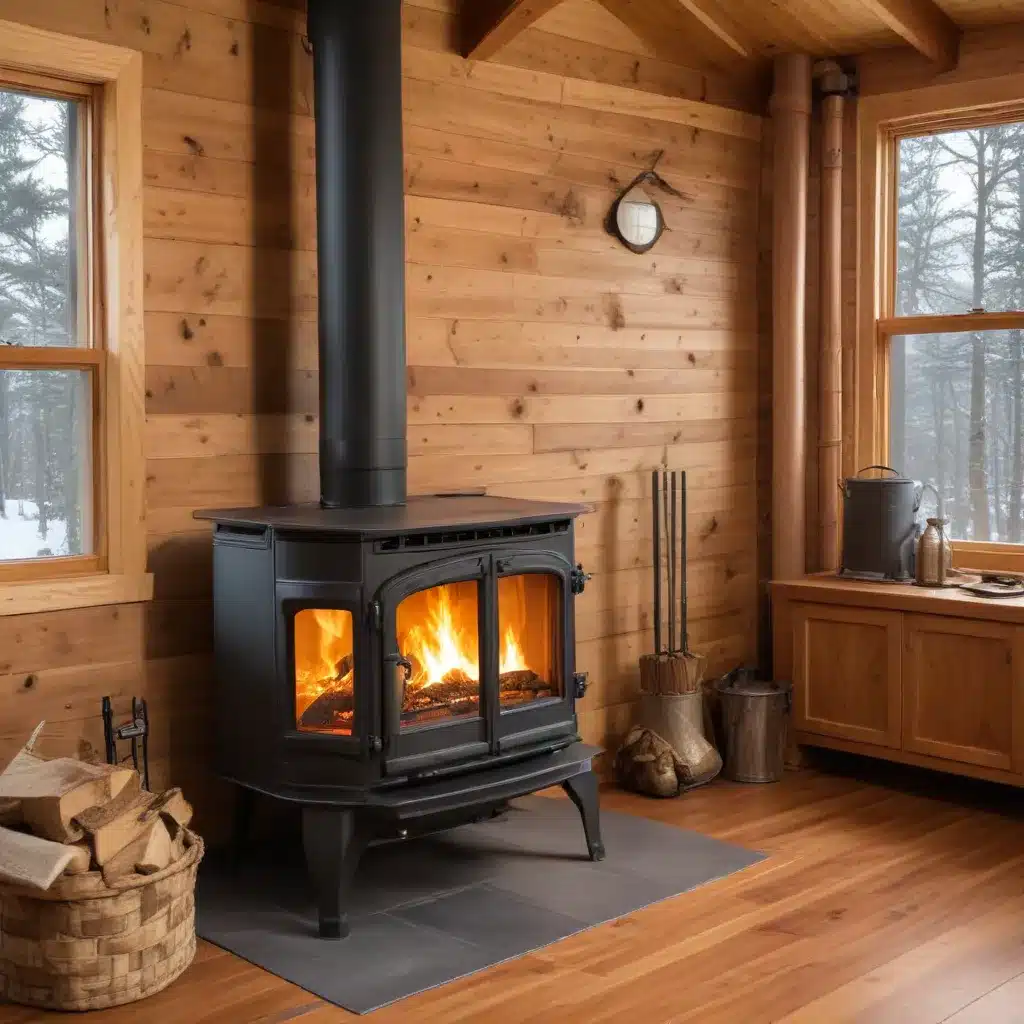
Understanding Wood Stove Combustion
Wood stoves have a rich history, evolving from humble hearths to sophisticated heating appliances that harness the power of combustion to generate warmth. At the core of a wood stove lies the firebox, where the burning of wood takes place. This process is governed by the principles of combustion, which require three essential elements: fuel (the wood), oxygen, and heat.
As the firewood burns inside the stove’s firebox, it undergoes a series of chemical reactions, releasing heat energy measured in British Thermal Units (BTUs). The temperature a wood stove can reach is heavily influenced by the amount of oxygen available for this combustion process. By adjusting the air vents and dampers, you can control the airflow and regulate the intensity of the fire, directly impacting the heat output.
Factors Influencing Wood Stove Temperature
Several key factors contribute to the temperature a wood stove can achieve:
-
Oxygen Supply: The primary factor determining wood stove temperature is the amount of oxygen available for combustion. By manipulating the air vents and dampers, you can control the airflow, allowing more or less oxygen to reach the fire. Increased oxygen results in a hotter, more intense burn, while restricting airflow lowers the temperature.
-
Wood Type and Quality: The type and quality of the firewood used also play a significant role. Hardwoods, such as oak or maple, generally burn hotter and longer than softwoods like pine. Properly seasoned wood, with a moisture content below 20%, will also burn more efficiently and produce more heat than freshly cut, “green” wood.
-
Stove Design and Insulation: The construction and insulation of the wood stove itself impact its ability to retain and radiate heat. Well-designed, insulated stoves with advanced combustion systems can achieve higher temperatures and provide more efficient heat output compared to older or poorly insulated models.
To accurately measure the temperature of a wood stove, a magnetic stove thermometer is a common tool. These thermometers attach to the stove’s surface and provide real-time temperature readings, typically up to around 1100°F (600°C). However, it’s important to note that the maximum temperature displayed on the thermometer may not reflect the peak temperature within the firebox, which can be significantly higher.
Optimizing Airflow for Maximum Heat
Controlling the airflow in your wood stove is crucial for maintaining a comfortable environment and maximizing fuel efficiency. Most wood stoves are equipped with air vents or dampers that allow you to adjust the oxygen supply to the fire.
Adjusting the Air Vents
- Opening the Vents: Increasing the air supply by opening the vents will result in a hotter, more intense fire. This is useful when you need to quickly generate a lot of heat or when the stove is first being lit.
- Closing the Vents: Restricting the air supply by closing the vents will lower the temperature, reducing the heat output. This can be helpful when the room becomes too warm or when you want to prolong the burn time of the wood.
Experiment with different vent positions to find the right balance between heat output and fuel efficiency for your specific needs and preferences.
Maintaining Proper Draft
The draft in your chimney can also influence the temperature of your wood stove. A strong draft can increase airflow, intensifying the fire, while a weak draft may result in a cooler burn. Ensure your chimney is properly installed, maintained, and free of obstructions to optimize the draft and achieve the desired temperature.
Enhancing Heat Efficiency
To maximize the heat output and efficiency of your wood stove, consider the following strategies:
-
Insulation and Installation: Proper insulation around the stove and chimney can help retain heat, allowing your wood stove to operate at its optimal temperature for longer periods.
-
Circulation Fans: Integrating blowers or fans with your wood stove can enhance heat distribution throughout your living space, ensuring even and efficient heating.
-
Seasoned Firewood: Using properly seasoned firewood with a moisture content below 20% will result in a hotter, cleaner burn, producing more heat and fewer emissions.
-
Regular Maintenance: Regularly cleaning the stove’s components, including the flue pipe and chimney, helps prevent the buildup of soot and creosote, maintaining optimal airflow and heat transfer.
Prioritizing Safety
While wood stoves offer a cozy and inviting atmosphere, safety should always be the top priority. Proper installation, maintenance, and adherence to safety guidelines are essential to minimize the risk of fire and other hazards.
Maintaining Clearances
Ensure that your wood stove is installed with the correct clearances from any combustible materials, such as walls, furniture, or flooring. Consult the manufacturer’s instructions or a professional to determine the appropriate clearances for your specific stove model.
Monitoring Carbon Monoxide
Wood stoves can produce carbon monoxide, an odorless and colorless gas that can be dangerous. Install and regularly test carbon monoxide detectors on every level of your home to ensure the safety of your family.
Educating Household Members
Teach all household members, especially children, about wood stove safety. Establish clear rules, such as keeping a safe distance from the stove and never leaving it unattended while in use.
By understanding the science behind wood stove combustion, optimizing airflow, enhancing heat efficiency, and prioritizing safety, you can unlock the full potential of your wood stove and enjoy the warmth and comfort it provides throughout the colder seasons. Remember to consult the manufacturer’s instructions, maintain your stove regularly, and consider hiring professional assistance when needed to ensure your wood stove operates at its best.
Choosing the Right Wood Stove
When selecting a wood stove, it’s important to consider factors such as the size of your living space, the desired heat output, and the efficiency of the stove. Visit the Wood Stove Heaters website to explore a wide range of high-quality wood stove options and find the perfect fit for your home.


